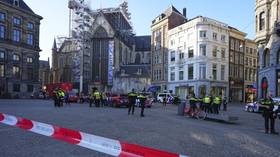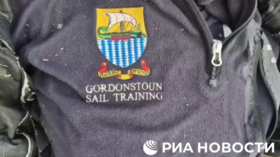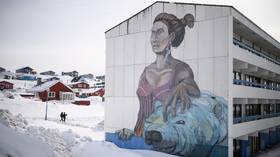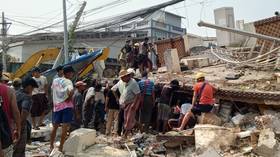Total CEO's plane crash seemingly ‘obvious’ but many issues to investigate - aviation expert
A set of unfortunate circumstances may have caused the fatal airline accident that claimed the life of Total's CEO Christophe de Margerie, including technical problems and human error, Mark Weiss, a former American Airlines pilot, told RT.
RT:The preliminary version says the plane collided with a snowplow during take-off. How could this have happened?
Mark Weiss: It is a very good question. This brings up a few different issues. One of the primary issue is was there any ground surveillance radar working at the time which would have alerted anyone in the control tower that there were vehicles on the runway or close to the runway and have they been in communication with them? Was there miscommunication with the flight crew? Was there a language issue involved or something like that? What were the weather conditions at that time? How restricted was the visibility? All of those factors are going to come into play.
Certainly the investigation is going to hone in on the weather, the communications, what instrumentation was operative and non-operative and what did the control tower, when they gave the clearance for take-off, did they know an aircraft was approaching the runway, that a vehicle may have been there or perhaps just passed. A lot of questions come into play for this now.
RT:What are the chances to escape a collision once an object like another plane, or in this case a vehicle becomes visible to pilots and is in their path? How difficult is it to maneuver?
MW: There are certain parameters on the aircraft when you take off and there are certain speeds that have to be obtained to make decisions on when to abort the takeoff, when to continue the takeoff. And if the aircraft had gone beyond the speed, the velocity at which you must have had to abort the takeoff, then he would have to keep going. And by keeping going, he would then have to take the aircraft into the air and then come back to the airport which seems like what may have happened.
The distance down the runway where this occurred is going to be the critical factor. And again then you bring into account what was the visibility like, what was the communication, was there a radar, ground surveillance radar that was being transmitted to the tower, and if so, why didn't somebody in the tower say something?

RT:The crashed jet was a light French Falcon plane – how safe is this model?
MW: My understanding of this, and I’m not a light plane pilot and I have not flown Falcon jet. Falcon jet came out in the 80s, it is an older technology, it is a very rugged airplane. Falcon built a magnificent aircraft. It is stable. It was one of the first generations of aircraft using the three-engine configuration built for long range flying. To come back to one of the other questions that you've asked, what this is also going to pose on the runway is, how do you make that runway safe for every other aircraft by making sure there is no debris on the runway or in the surrounding area of the runway, so it would not get sucked up into the engine, so you don’t have another problem going forward. There are a lot of issues with this.
RT:Are there any differences in safety protocols for business planes?
MW: As far as commercial airliners in regard to the weather, there are certain differences and certain restrictions that the commercial airliners would have different parameters for take-off. And depending on the instrumentation both on the runway, at the pilot's training and the aircraft, so there are different parameters. But basically you've got a very highly qualified crew I'm sure, which the investigators will go into the background of the crew – how much sleep they got, how much training they got. This is going to be a long process to determine the actual events and what really happened on this night.
RT:How long does it usually take to determine the cause of the accident when this type of the crash happens?
MW: When the investigators come in to do something like this, they are going to get anybody from the engine specialists to hydraulics specialists, to radar specialists, to air traffic control specialists. They are going to look at everything. They are going to look at how much sleep the crew had before they got on this flight, what was the weather like, what was the communication like.
This can take quite a while. It may look obvious on the surface what the cause was, remember accidents don't happen for a single reason. They happen from a number of links that are being broken. So you have perhaps bad weather, poor visibility. Perhaps there was fatigue on the crew or inside the air traffic control tower. They are going to look at all of this and come up with a probable cause of the accident and that could take some time.
The statements, views and opinions expressed in this column are solely those of the author and do not necessarily represent those of RT.













